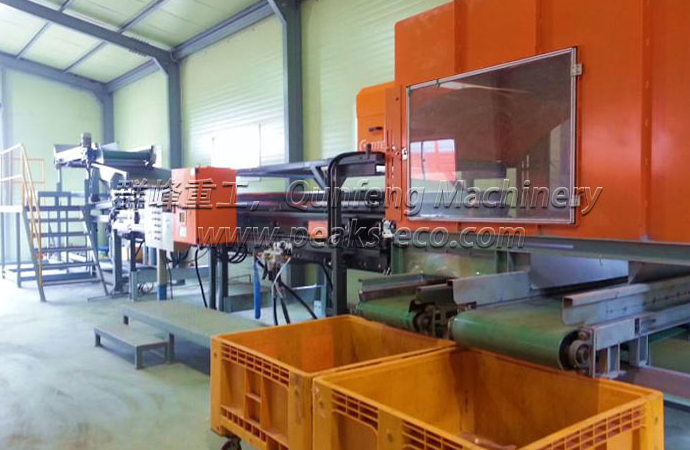Waste Transfer Station System
The system has adopted the most advanced vertical compression technology. The theory of the process, in simple words, is discharging waste from above to a vertical container below taking advantage of the gravity. It is as simple as we dump the garbage in the trash can every day. Our technology is to make full use of the limited space and simplify the process of waste transfer.
The waste container is considered as the core of the whole system. Every equipment of the transfer station is working around the container directly or indirectly. After the transfer truck places the container in the discharging position, the discharging hopper will be put above the container so that the waste can be discharged directly to it permitting no waste dropping out of the container. When the container is fairly full, the compactor will move to above the container and start to compress. As long as the container is completely full, it will be mounted on a transfer truck though a special guiding device to be transported for final disposal. The whole process is fairly simple and operation-maintenance friendly. It can work properly even when the power is off. Besides, central control panel, weighing device, deodorization and dust-cleaning devices are considered in the system.
Main features
1. Space saving
Transfer truck and garbage truck can be working in the same site without rampway.
2. Convenient discharging
Direct vertical discharging to the container with higher efficiency.
3. No trash dropping out
Vertical compression from above to below inside the container allowing no waste dropping out of the box.
4. Fully sealed container
The device is fully sealed allowing no waste liquid leakage from the container.
5. Large transfer volume
Heavy detachable transfer truck is recommendable. More than 16 tons per truck.
6. Low power consumption
Taking advantage of the gravity, the waste will be discharged directly to the container and compressed by the compactor, which only needs 30kw for maximum power.
Overground:
The whole set of equipments is located on foundation built on the ground. The design includes the rampway and the area of operation site, which can be fully closed or semi closed (only the rampway will be located outside).
The nominal capacity of the design is 1000 tons/day and the station will occupy approximately an area of 8000 ㎡. The operation is 78m long, 67m wide and 18.7m high, approximately 4900 ㎡ for the main buildings.
The main workshop of the station contains discharging area, transfer area, rampway, compaction and load area, auxiliary area. The compaction and load area is located in the center of the studio, the second floor of which is the area of discharging and the first floor is the auxiliary area.
Underground:
The whole operation area is located underground. Over the station small buildings and green area can be built. Consequently this type of waste compaction system is ideal to be built under park, square and urban green zone as a perfect solution for insufficient space problem in cities.
Waste Transfer Station System has a large capacity of production, which can reach to 1200 tons/day. The main buildings of the system occupy an area of 3940 ㎡ and the operation area is 60m long, 56m wide and 10 high.
The waste collection trucks and transfer trucks enter and leave the station using rampway. The discharging area is located in the first underground floor, the transfer area, office area and other area in the second underground floor.
http://www.peaks-eco.com/large-scale-waste-transfer-station-system/vertical-waste-compaction-system1-22.html
